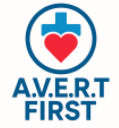A.V.E.R.T. HARM – PROGRAM FOUNDATION
Program Name
-
A.V.E.R.T. HARM
Awareness and Vigilance for Effective Response to Emerging Risks and Trends
(simplified: Awareness and Vigilance for Effective Response to Trends)
Overall Goal
A unified, structured, life-support-style harm reduction framework that:
- Facilitate/Conduct training programs in the field of harm mitigation, risk reduction, and effective response to imminent or occurring harm and facilitation of training, workshops, seminars and course materials.
-
Expands harm reduction beyond addiction and overdose.
-
Equips Community members, Clinicians, and Public Health leaders with tailored tools.
-
Provides a common language, models, and assessments across roles.
-
Functions like CPR/ACLS training: clear, algorithmic, role-specific response guidance.
Three Core Tracks
-
Community & Frontline (Lay/Peer/Family/First Responder)
-
Simple, accessible, action-driven tools.
-
Helps community identify and respond to early risk and harm.
-
-
Clinical (Healthcare, Mental Health, Social Work, Emergency, etc.)
-
Assessment-driven models (e.g., S.C.A.N., H.A.R.M.O.N.Y., R.E.A.D.Y.).
-
Integrated with clinical decision-making and treatment pathways.
-
-
Public Health & Systems Leadership (Policy, Admin, Population-Level)
-
Population-based surveillance, policy response, and systemic risk reduction.
-
Leadership, coordination, and structural response focus.
-
Core Structures & Models
1. Expanded Harm Categories (9 Domains)
These act like “pillars” across all tracks:
-
Mental & Behavioral Health
-
Chronic Illness & Disease Burden
-
Reproductive & Maternal Health
-
Youth & Developmental Risks
-
Elder Health & Aging Risks
-
Provider & Systemic Harm
-
Social Determinants of Health
-
Cumulative/Intersecting Harms
-
Digital & Algorithmic Harms
(Each domain has track-specific content, “what to look for,” and self-care considerations.)
2. Communication & Engagement Strategies Module
-
Standalone module before the 9 domains.
-
Covers: trust, cultural humility, stigma reduction, trauma-informed engagement, leadership language.
3. H.A.R.M.™ Typology Lens
A universal “lens” for identifying harm types across settings:
-
H – Hidden / Historical Harm
-
A – Acute / Active Harm
-
R – Relational / Repeated Harm
-
M – Missed / Minimized Harm
(Each comes with: Definitions, What to Look For, and Clues in Systems.)
4. A.B.C.D.E.™ Assessment Model
Frontline-style algorithm for rapid action across tracks:
-
A – Acknowledge / Awareness
-
B – Be Direct / Build Safety
-
C – Consider / Check for Harm
-
D – Determine Next Steps
-
E – Escalate or Engage Resources
5. S.C.A.N.™ (Clinical Track Primary Tool)
-
S – Signs & Symptoms
-
C – Context
-
A – Alignment (with history, values, patterns)
-
N – Needs
6. R.E.A.D.Y.™ (Response Tool)
(two preserved versions — both in play for training refinement)
-
Recognize, Explore, Affirm, Direct, Yield to what’s needed
-
Refine the Picture, Evaluate Priorities, Align with Values, Design the Response, Yield to Critical Clarity
7. H.A.R.M.O.N.Y.™ (Clinical Integration Tool)
Still in development — aligns multiple data points into a holistic picture of harm and response priorities.
8. F.O.C.U.S.™ Lens
-
C = Co-occurring Issues and Co-morbidities
-
Teaching point: “Don’t let the stubbed toe hide the heart attack.”
Training Manual Structure (agreed final)
-
Introduction (program mission, overview, acronym expansions)
-
Communication & Engagement Strategies (universal module)
-
Nine Harm Domains (with self-care + leadership focus for each, applied to 3 tracks)
-
Tools & Models (H.A.R.M., A.B.C.D.E., S.C.A.N., R.E.A.D.Y., H.A.R.M.O.N.Y., F.O.C.U.S.)
-
Application Scenarios (case-based, track-specific role play)
-
Leadership Integration (woven throughout, reinforced in PHL track)
-
Self-Care & Sustainability
Teaching Philosophy
-
Algorithmic, not abstract → like ACLS/CPR, with clear flowcharts and “if/then” steps.
-
Unified but role-specific → same core tools adapted for Community, Clinical, and Public Health.
-
Expanded harm reduction → not just overdose, but suicide, depression, postpartum, systemic harm, digital harms, etc.
-
Self-care integrated → for every track and every domain.
-
Leadership framing → all roles are framed as leadership roles (personal, clinical, systemic).
We are constantly building on to our curriculum, The AVERT Harm CORE traning modules, provides the complete foundation of the A.V.E.R.T. Harm program as it exists in our development of this program so far.
Note: “Future training enhancements will include program mascots and character-based learning guides to further engage participants.”




